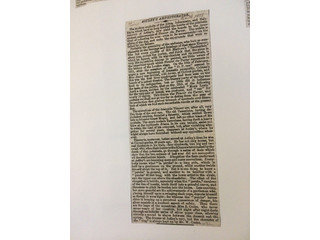Transcription
ASTLEY’S AMPHITHEATRE.
The modern exploits of the Alma, Inkermann, and Balaklava, which have so long kindled the hearts of the patriotic habitués of Astley’s, now yield the boards to the more ancient achievements of Timour the Tartar. The public is tired of reflecting for ever—even in its amusements—on the affairs of the day, and seeks the enjoyments that were relished by our fathers.
Probably the generality of the audience, who look so complacently at the fumings and fretsings of that same Timour, who has every quality of Kit Marlowe’s “Tamburlain” about him, except the poetry, and think that the piece in which he figures, with its war-chariots and its combats, is very like equestrian dramas in general, are little aware of the important epoch which Timour the Tartar represents in the history of the London Stage. On the 10th of February, 1811, after the cessation of the “O.P. row” seemed to augur a new beginning of a dramatic prosperity, Colman’s Blue Bears was revived, with horses, at Covent-garden, and this was the first time quadrupeds had been seen on the boards of a patent theatre. The literary party of the day was loud in its indignation, but so little did it influence the taste of the public, that on the 29th of the following April a drama, written by the celebrated “Monk Lewis” for the very sake of horses, was produced, and “ran” for nearly 50 nights. This drama was Timour the Tartar, and perhaps we shall not go too far in dating from the year of its production that gradual triumph of spectacle over literature of which we find such remarkable results at the present day.
The operations of the dramatic Timour are, after all, very like those of the real one. The old Tamerlane, having demolished empires, founded a dynasty, which settled down into a faineant Great Mogul, and left no other trace of his exploits. The more modern Tamberlane, having dealt a heavy blow at the legitimate drama in its own temple, seeks not to retain the land of his conquest, but, after vanishing altogether for several years, reappears at Astley’s, where he might always have flourished without any opposition whatever.
Timour is, moreover, better served at Astley’s than he was at Covent-garden 40 years ago. He has not only horses, but real elephants in his train—four elephants, two bug and two small, who, when their duties to the Khan are terminated by the death of that potentate, go through a series of feats which show that the two animals of last year did not monopolize all the elephantine talent. Altogether the feats performed at Astley’s are becoming more and more marvellous. Everybody knows what “la perche” is—a long pole, which is held by a gentleman on the ground, while another twirls himself about the top of it. But it is one thing to know a “perche” in general, and another to be familiar with a “perche” 40 feet long, with the lower artist in the circle, and the upper one above the chandelier. The effect of the elongation is terrific, especially when the “perche,” emulous of the lien of beauty, bends itself into a graceful curve, and threatens to pitch its burden into the boxes. Less exciting, but more graceful are the achievements of a gentleman who, placing himself upon a swinging slack rope, deports himself as though it were tight; for whereas the “perche” heroes shine in keeping up a perpetual appearance of danger, his glory consists in a constant aspect of safety. Then there are the leaps of the equestrian Miss E. Cooke, who never seems weary of her vocation, but night after night darts through an infinite series of silver paper discs, allowing scarcely a second to elapse between the descent and the spring. The dramas at Astley’s vary, but the character of the “ring” is always kept up by Mr. W. Cooke.
